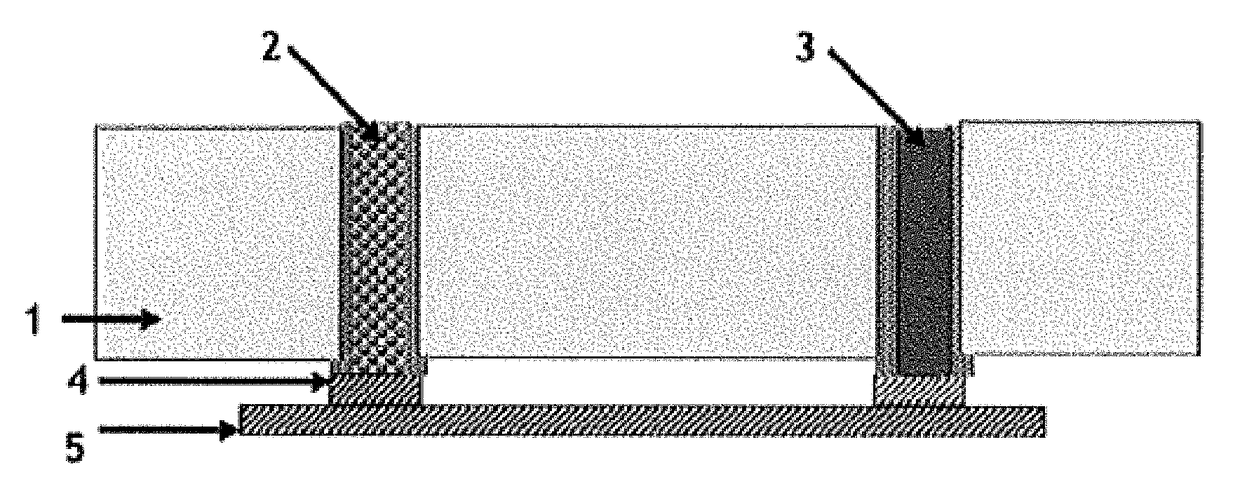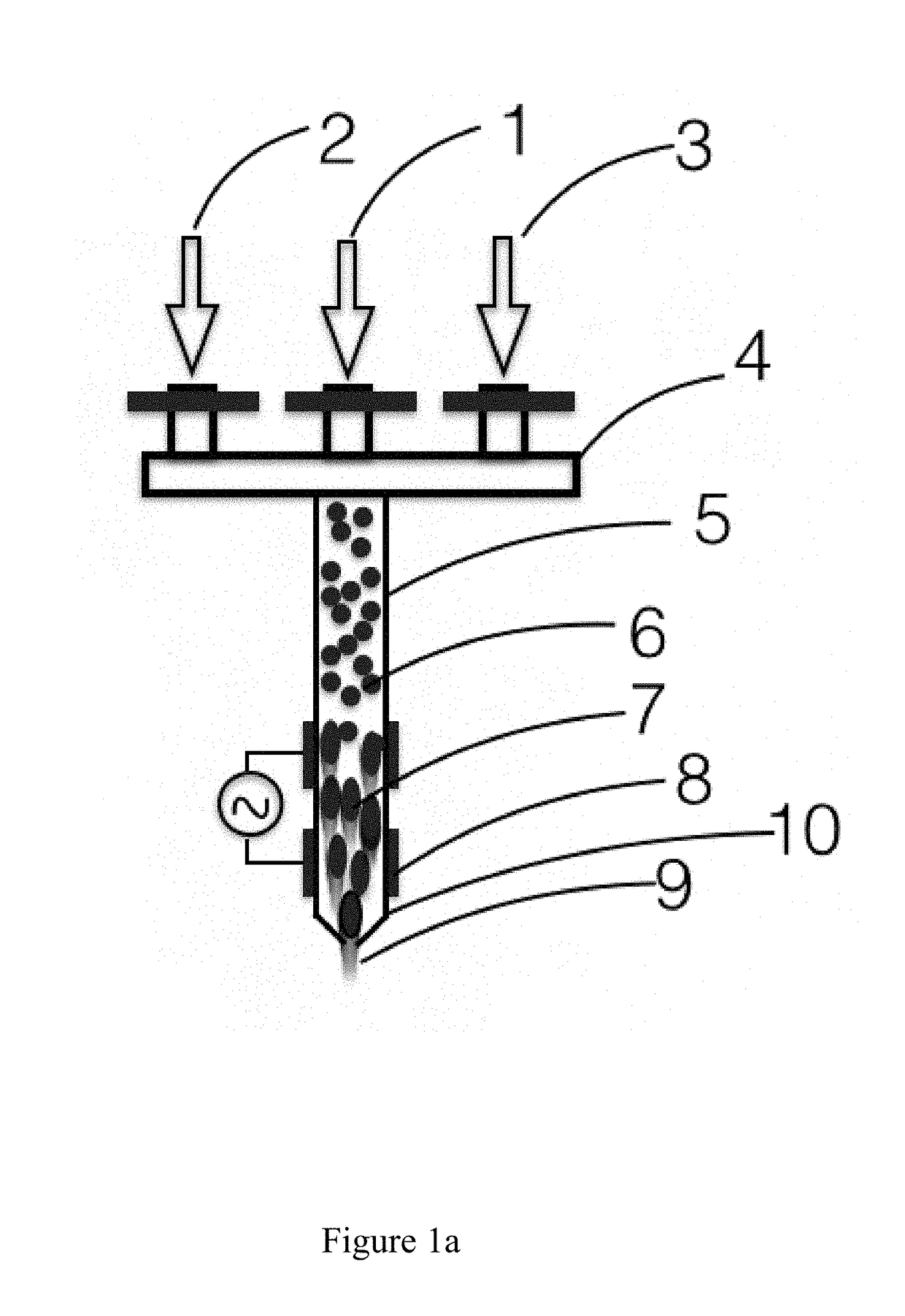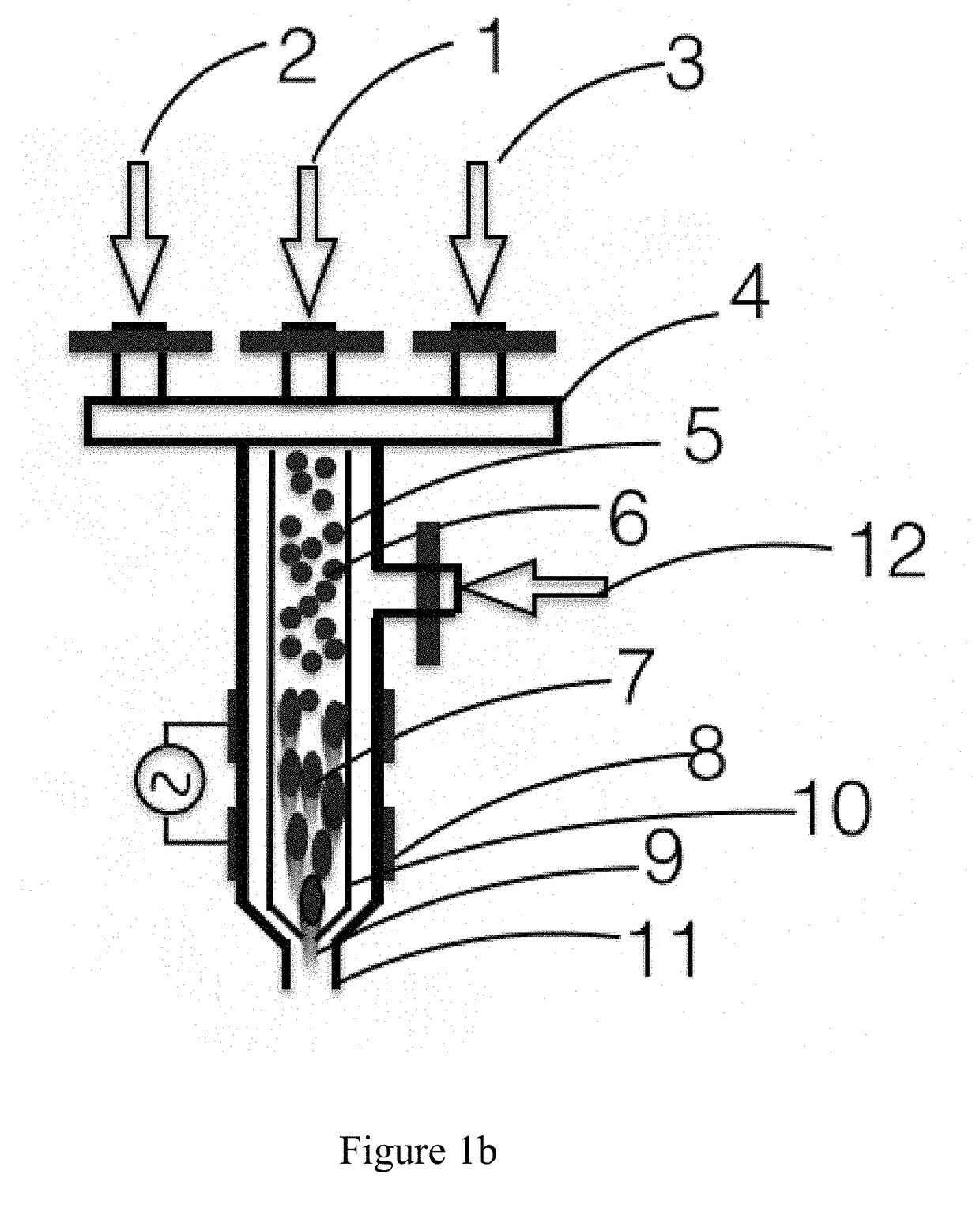In situ tailoring of material properties in 3D printed electronics
- Summary
- Abstract
- Description
- Claims
- Application Information
AI Technical Summary
Benefits of technology
Problems solved by technology
Method used
Image
Examples
Embodiment Construction
[0044]FIG. 1 shows the schematic of the plasma jet printer system with provisions for the addition of various process gases to tailor the material properties of the nanoparticle / microparticle in the plasma jet printer. Various process gases including helium, argon, hydrogen, nitrogen, carbon dioxide, oxygen, methane, alkane, alkene, silane, carbon tetra fluoride, sulfur hexafluoride, etc., can be used on their own or with appropriate mixture to suit the need. Nanoparticle / microparticle colloid input. FIG. 1 shows the following elements:[0045]Nanoparticle / microparticle colloid input 1[0046]Gas supply line for in situ processing 2[0047]Gas supply line for in situ processing 3[0048]Manifold for controlling the gas flow to the plasma jet nozzle 4[0049]Plasma jet printer nozzle 5[0050]Nanoparticle / microparticle colloid 6 in the plasma jet printer nozzle prior to exposure to plasma jet with particle size and shape same as the input colloid[0051]Nanoparticle / microparticle 7 in the plasma j...
PUM
| Property | Measurement | Unit |
|---|---|---|
| diameter | aaaaa | aaaaa |
| temperature | aaaaa | aaaaa |
| temperature | aaaaa | aaaaa |
Abstract
Description
Claims
Application Information
 Login to View More
Login to View More - R&D
- Intellectual Property
- Life Sciences
- Materials
- Tech Scout
- Unparalleled Data Quality
- Higher Quality Content
- 60% Fewer Hallucinations
Browse by: Latest US Patents, China's latest patents, Technical Efficacy Thesaurus, Application Domain, Technology Topic, Popular Technical Reports.
© 2025 PatSnap. All rights reserved.Legal|Privacy policy|Modern Slavery Act Transparency Statement|Sitemap|About US| Contact US: help@patsnap.com



